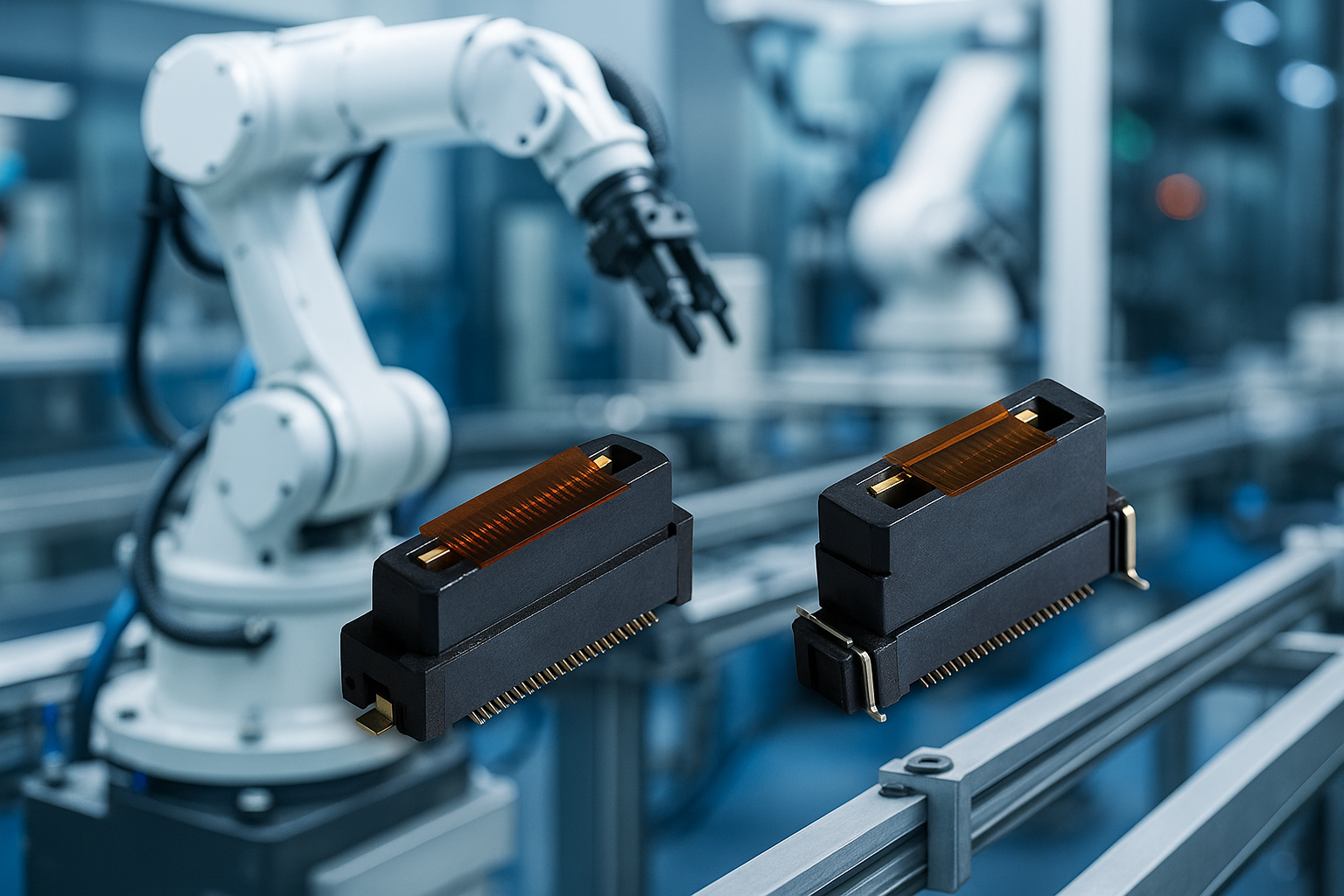The Critical Role of Floating Connectors in Automation and Robotics
As industrial automation and robotics continue to evolve rapidly, the demand for reliable, durable, and flexible connectors is growing. Traditional connectors often fail under conditions of multi-axis motion, vibration, or high-precision control due to poor contact or mechanical stress. Floating connectors, with their unique structural design and displacement tolerance, have emerged as key components for ensuring stable and secure connections in demanding environments.

By allowing relative movement between male and female connectors along the X, Y, or Z axes, floating connectors absorb assembly misalignments and vibrations while reducing stress on solder joints and contact points. This enhances both the mechanical reliability and longevity of the connection—especially valuable in modular or high-mobility applications.
Key Application Scenarios:
· Modular Docking Systems: Automated loading/unloading platforms, sliding stages, and swappable fixtures require high-speed mating and unmating. Floating connectors help compensate for positioning errors, improving assembly efficiency and connection integrity.
· Robot Joint Control: In collaborative robots and multi-axis robotic arms, joints typically house dense PCBs and control modules. Floating connectors absorb micro-movements to preserve signal quality and reduce fatigue-related failures.
· Vibration Resistance in Dynamic Systems: In AGVs and mobile logistics platforms, connectors must endure constant vibration. Floating connectors mitigate micro-motion wear and prevent solder cracks or contact degradation over time.
In real-world engineering, selecting the right floating connector requires a holistic evaluation of environmental conditions, usage scenarios, and performance requirements. A well-informed selection not only ensures connection reliability but also helps optimize system maintenance costs and overall service life. Below are key selection criteria and recommended options:
1. Floating Tolerance Options
- Standard industrial equipment: A ±0.5 mm floating range is generally sufficient to balance installation flexibility and connection stability.
- High-vibration environments (e.g., mobile systems or heavy-duty machinery): A larger floating range of ±0.8 mm or more is recommended for absorbing continuous motion.
- High-precision instrumentation: A micro-floating design of ±0.3 mm is ideal, offering positional accuracy while compensating for minor assembly misalignments.
2. Contact Performance Configuration
- Signal transmission: Choose contacts made of high-resilience copper alloy with gold plating to ensure stable signal integrity.
- High-current applications: Use multi-point contact designs to distribute resistance and reduce heat buildup.
- Harsh environments (humidity, corrosion): Ensure connectors are equipped with IP67 or higher sealing protection.
- Space-constrained designs: Mixed-layout terminals (power + signal) help reduce PCB footprint and routing complexity.
3. Mounting Guidelines
All floating connector signal terminals use SMT (Surface Mount Technology) and are compatible with automated assembly lines.
- Mounting ears (fixing tabs) are available in both SMT and through-hole formats. Selection depends on your board layout and mechanical fastening requirements.
- Field-maintainable systems benefit from plug-and-play designs with alignment guides to simplify installation and servicing.
- Tight spaces can benefit from right-angle connector configurations to optimize spatial layout.
4. Reliability Verification and Testing
- Ensure the connector's mechanical endurance and environmental tolerance meet reliability expectations for the intended application.
- Comprehensive environmental validation—including vibration, thermal cycling, and salt spray testing—is essential to guarantee long-term performance.
Greenconn's Floating Connector Expertise
As a professional connector manufacturer, Greenconn has years of experience in developing and producing a wide range of floating connector solutions. Our product lines span various pitches, structural formats, and mounting options, serving industries such as industrial automation, robotics, and automotive electronics.
For tailored recommendations or product support, feel free to reach out to us!
www.greenconn.com
sales@greenconn.com



